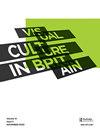The Movement of Satirical Prints between London and Dublin in the Late 1820s: Daniel O’Connell and Catholic Emancipation
Q2 Arts and Humanities
引用次数: 0
Abstract
This article examines the exchange of satirical printed images between London and Dublin in 1828–9. Through the close visual analysis of three prints, two published in London and one in Dublin, it addresses how these images responded to news, used humour as a mechanism for provoking shared laughter, and shaped debates on both sides of the Irish Sea about Daniel O’Connell (1775–1847) and Catholic emancipation. By analysing an emergent motif of movement of people (marching, processing, leading and following), it is shown that revolutionary implications were constructed in printed images, especially for power in, and governance of, the Union.19世纪20年代末伦敦和都柏林之间的讽刺版画运动:丹尼尔·奥康奈尔和天主教解放
本文考察了1828 - 189年伦敦和都柏林之间讽刺印刷品的交换。通过对三幅版画(两幅在伦敦出版,一幅在都柏林出版)的近距离视觉分析,它探讨了这些图像如何回应新闻,如何利用幽默作为引发共同笑声的机制,以及如何塑造爱尔兰海两岸关于丹尼尔·奥康奈尔(Daniel O’connell, 1775-1847)和天主教解放的辩论。通过分析人们运动(游行、处理、领导和跟随)的一个新兴主题,表明革命的含义是在印刷图像中构建的,特别是在联盟的权力和治理方面。
本文章由计算机程序翻译,如有差异,请以英文原文为准。
求助全文
约1分钟内获得全文
求助全文
来源期刊

Visual Culture in Britain
Arts and Humanities-Visual Arts and Performing Arts
CiteScore
0.60
自引率
0.00%
发文量
1
 求助内容:
求助内容: 应助结果提醒方式:
应助结果提醒方式:


